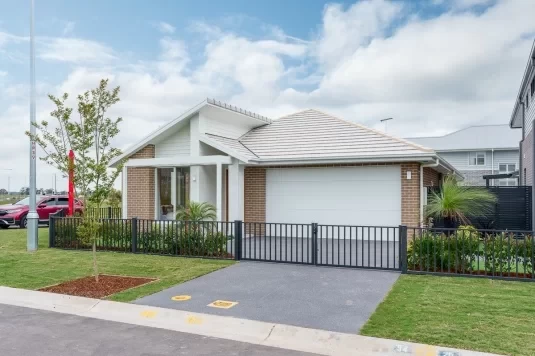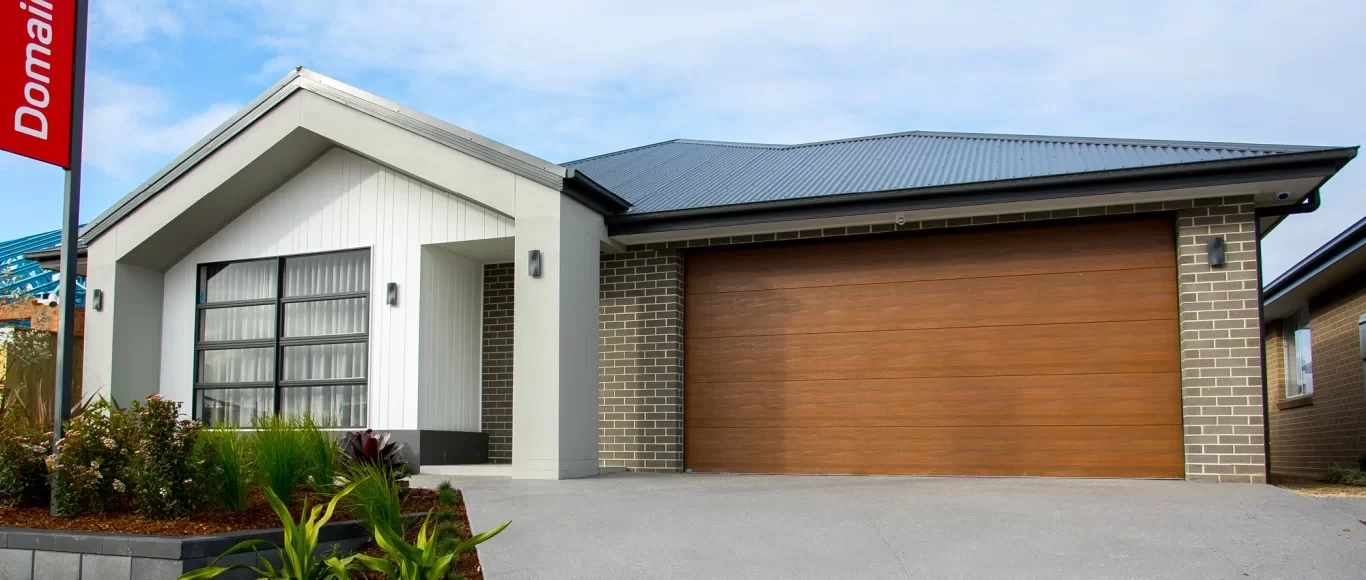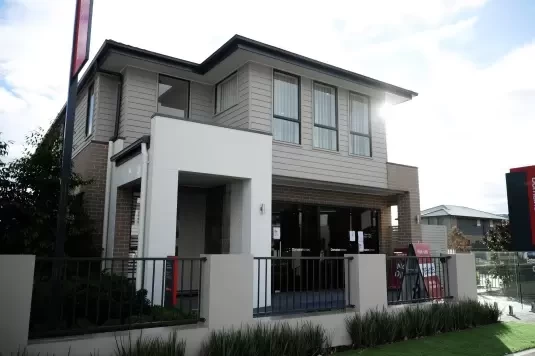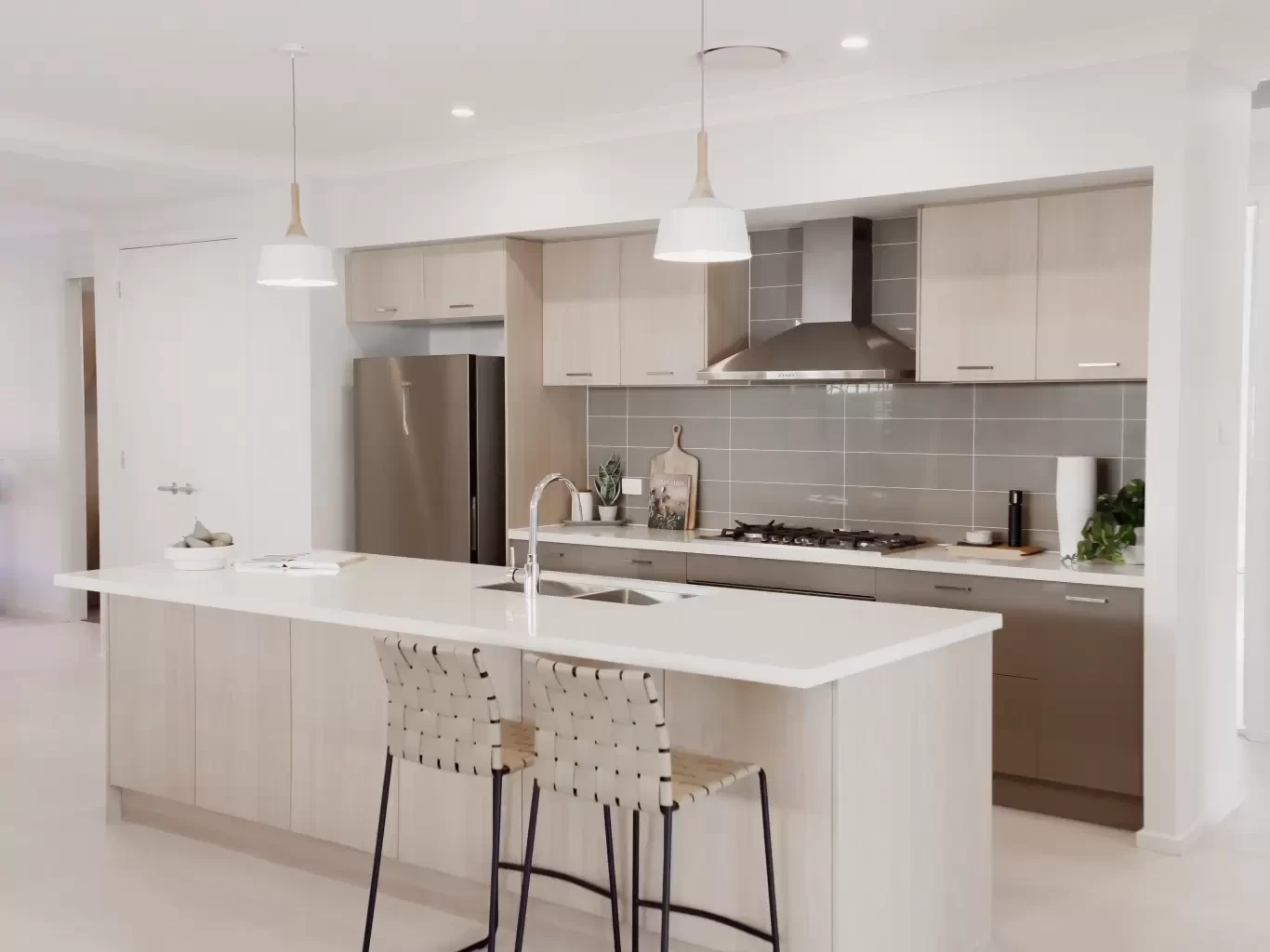Let's transform your home construction journey with expert insights into material estimation that can maximise your success and unlock significant savings.
Here's a shocking reality - Australian homeowners are facing average cost overruns of $42,000 in 2025 due to material estimation errors, according to the Housing Industry Association. But you're about to discover how to absolutely avoid this costly mistake, including strategies to account for unforeseen expenses and indirect costs that often derail a building project.
Being a business who's crafted perfect solutions for Australian residential projects for decades, we've designed strategies that work. The ultimate secret? A perfectly organised, systematic estimating process that's efficient for any home size.
You're about to experience a comprehensive guide that breaks down Australian home construction material estimation into clear, actionable steps. We've covered everything you need to know:
Essential techniques to master architectural drawing interpretation
Professional methods for precise quantity calculations
Specialised strategies for Australian climate considerations
Expert insights into preventing cost overruns
These powerful features work perfectly whether you're planning an efficient three-bedroom home in Sydney or organising your dream beachfront property in Perth. It's all about understanding and implementing the right strategy from start to finish.
Let's dive in and unleash your ability to estimate materials with professional-level accuracy. We'll start by optimising your understanding of architectural drawings - the foundation that nurtures successful estimations.
1. Start with a Comprehensive Building Material List Australia
Transform your architectural plans into actionable material lists
Utilise expert-designed Australian calculation tools
Master local building requirements
1.1. Let's Unlock Your Architectural Plans
You're about to discover how to perfectly translate architectural drawings into a precise material list. These expertly crafted plans are your ultimate roadmap, revealing every essential detail from window dimensions to door placements. Here's how to maximise their value for your planning strategy.
As Mark Lawler Architects explains, "Construction drawings and specifications combined describe all the materials and products required to construct a building." Let's transform these technical drawings into an organised material strategy that absolutely works.
To efficiently organise your material planning, focus on these key structural elements:
- Map out your foundation requirements
- Document wall system materials
- List roofing components
- Specify flooring materials
- Detail finishing elements
Transform Blueprints into Material Specifications
Let's dive into the blueprint details to unfold your material needs. You'll discover that each section represents specific material requirements. For walls, we're looking at concrete, timber, or brick quantities. A typical 1000 sq ft home features distinct material needs - you'll want to organise these methodically.
Your roofing strategy requires careful planning to determine optimal materials. Expert insights show that specifications should include detailed product information, from tiles to metal sheeting options. We've found that utilising the plan dimensions helps create unforgettable accuracy in your calculations.
Flooring planning deserves special attention. You'll want to expertly calculate subfloor requirements, whether you're working with timber or concrete. Experience shows that precise measurements here transform into perfect execution later.
1.2. Maximise Online Calculation Tools
You're about to experience the efficiency of Australian-standard calculation tools. These features are designed to streamline your material estimation process, making it absolutely straightforward to determine exact quantities. Let's unlock the power of these digital resources to perfect your planning strategy.
Here's what you'll need to input:
Complete floor dimensions
Wall specifications
Roofing design preferences
These tools are crafted to efficiently calculate quantities for concrete, timber, and other essential materials. We've found that including a material wastage factor of 10-15% helps optimise your planning strategy.
Perfect Your Code Compliance
Building Code of Australia (BCA) compliance is your foundation for success. These standards are designed to transform your material selections into perfectly compliant choices. Let's organise your approach:
- Review current BCA guidelines
- Connect with local council requirements
- Implement area-specific material needs
- Optimise your material list for compliance
You're now equipped with expert insights to organise an efficient material estimation strategy. This planning approach unlocks the potential for successful project execution.
2. Calculating Material Needs for Australian Homes
Let's maximise efficiency by breaking down your material calculations into strategic steps:
Transform your project into organized sections
Map out requirements for each space
Utilise precise measurements for perfect accuracy
Master Your Square Metre Calculations
Here's how to unlock the perfect measurements for your project. Start with the floor space and wall dimensions - these are absolutely crucial for your material planning. Multiply length by width to get your floor square metres. For walls, combine height and width measurements. This creates your foundation for ultimate accuracy.
You'll find most suppliers feature materials priced per square metre. For expert insights on wall calculations, remember to subtract windows and doors from your total area. To streamline this process, you can utilize this handy Square Metre Calculator designed specifically for Australian construction projects.
Design Your Space Layout
Transform your plans into reality by crafting a detailed sketch. This visual guide helps optimise material placement and enhances communication with your team. Label everything clearly - you'll thank yourself later when organising supplies and discussing with contractors.
Perfect Your Material Calculations
Let's dive into specific material planning. Whether you're working with bricks, timber, or other materials, we've crafted an efficient approach for each:
For bricks, calculate your needs in complete pallet quantities. When planning timber requirements, you'll work in both square and linear metres. According to recent market insights, construction materials have seen a 7.7% increase, making precise calculations more important than ever.
Experience shows that including a strategic buffer of 5-10% covers your project perfectly. This extra planning prevents delays from unexpected material needs or design adjustments.
Essential Material Guidelines
Brick Calculations: Determine your square metre coverage and factor in your chosen bond pattern to get the perfect quantity
Timber Planning: Consider both area coverage and volume requirements, featuring different plank thicknesses
Concrete Requirements: Calculate volume in cubic metres, keeping in mind that structural requirements affect depth significantly
We're seeing unprecedented changes in the Australian construction landscape, with material costs expected to experience some relief starting in 2025. This makes strategic material planning absolutely essential for maximising your budget efficiency.
Remember to complete each calculation phase thoroughly before moving forward. Your attention to detail here transforms into real cost savings later. In our next sections, we'll explore specific Australian market pricing strategies to further optimise your project.
3. Factor in Australian Home Construction Material Costs
Unlock accurate cost estimates for essential building materials
Maximise your budget with strategic material selection
Transform your planning with expert insights on hidden costs
Let's dive into the perfect strategy for managing construction material costs in Australia. You're about to discover how to organise your budget effectively and make informed decisions for your project.
3.1. Average Material Costs
Understanding material costs is absolutely crucial for successful project planning. We've crafted this guide to help you navigate through Australia's diverse pricing landscape, where costs can vary significantly based on location and market dynamics.
Common Material Costs
Here's what you need to know about current material pricing. Premium-grade bricks typically range from $550 to $900 per thousand, while quality structural timber features prices between $900 and $1,300 per cubic meter. Ready-mix concrete, a foundation of any construction project, ranges from $150 to $220 per cubic meter. These prices serve as a strategic starting point - you'll want to connect with local suppliers for the most up-to-date rates.
Location-Specific Pricing
Let's talk about how location transforms your material costs. Metropolitan areas like Sydney and Melbourne often feature premium pricing due to high demand and complex logistics. Regional areas might offer more competitive material rates, but you'll need to factor in transport considerations. Expert insights from resources like Australian Building Costs and Pricing can help you optimise your location-based planning.
3.2. Additional Costs to Consider
You're going to experience costs beyond the basic material prices. We've designed this section to help you unlock the full picture of your investment and organise your budget effectively.
Delivery and Handling Costs
Efficient delivery planning is absolutely essential for your project's success. The perfect strategy includes considering transport distances, site accessibility, and handling requirements. You'll find that partnering with local suppliers who offer comprehensive delivery solutions can help maximise your budget efficiency. Master Builders Australia provides valuable insights on current delivery cost trends.
Market Fluctuations
The construction market is dynamic and constantly evolving. Current house construction costs range from $1,800 to $4,000 per square meter in 2024, varying based on design specifications and finishes. Experience shows that staying informed through resources like the Rawlinsons Australian Construction Handbook helps you implement effective pricing strategies.
3.3. Economic Factors Impacting Material Costs
Let's explore how broader economic elements influence your construction costs. We've designed this overview to help you navigate market dynamics with confidence.
Raw Material Price Changes
Global market forces can transform local material costs significantly. For example, international steel demand directly impacts domestic pricing, while workforce availability affects project timelines and costs. You'll find valuable market analysis in resources like Economics for Builders and Architects to help optimise your planning.
Policy and Regulatory Influences
Strategic planning includes understanding how regulations shape material costs through various mechanisms like tariffs and environmental requirements. The Australian Building Code Board's Guidelines features essential information to help you maximise compliance while maintaining cost efficiency.
By utilising expert insights and implementing thorough research strategies, you're now perfectly positioned to create comprehensive and accurate cost estimates for your construction project.
Advanced Tips for Accurate Material Estimation
Let's unlock the secrets to perfect material estimation that will transform your construction projects. We've gathered expert insights to help you maximise efficiency and create absolutely unforgettable results.
4.1. Perfect Your Strategy with Expert Input
You know what makes the difference between good and great projects? It's the wisdom that comes from experience. Let's dive into how you can organise your estimation process with expert guidance to deliver outstanding results.
Partner with Industry Leaders: Connect with architects and seasoned builders who've mastered the art of estimation. Their insights will help you design efficient solutions tailored to your project's unique features.
Learn from Success Stories: Transform your approach by studying what works. We've found that analysing successful projects helps you craft better estimates and make smarter material choices.
Example: Picture this - a builder in Queensland's Gold Coast utilised expert advice to select the perfect weather-resistant materials, resulting in a stunning beachfront property that's built to last.
According to ENR Construction Cost Data Dashboard, tracking 59 construction material costs across 20 major cities reveals that expert guidance can lead to 15-20% more accurate estimations.
4.2. Maximise Your Success Rate
Let's explore how you can optimise your estimation process and unleash your project's full potential. Here's how to transform common challenges into opportunities for success.
Master Environmental Considerations
Your location's climate directly impacts material performance and longevity. We've discovered that choosing climate-smart materials can absolutely transform your project's durability.
Future-Proof Your Choices: Implement strategies that account for weather patterns and environmental factors. You're creating a structure that's built to stand the test of time.
Real-World Example: A savvy builder in Sydney crafted the perfect material selection strategy by planning for both intense sun and frequent rain, resulting in a home that stays beautiful year-round.
Your Action Plan:
- Research regional climate patterns
- Connect with local suppliers
- Select materials designed for your environment
Perfect Your Quantity Planning
Here's how to craft estimates that hit the mark every time. Joist emphasises that accurate measurements and detailed planning are absolutely essential for project success.
Precision Tools: Utilise cutting-edge digital tools to maximize accuracy. You're ensuring every measurement is spot-on, every time.
Smart Contingency Planning: We've found that including a 10% buffer transforms potential setbacks into smooth sailing. You're always prepared for the unexpected.
Real-World Example: A forward-thinking builder in Brisbane implemented digital estimation tools, resulting in a 95% accuracy rate across all material calculations.
Your Strategy Checklist:
- Implement digital measurement solutions
- Create detailed material lists
- Build in smart contingencies
Remember, you're not just estimating materials - you're crafting the foundation for an unforgettable project. Let's make every calculation count.
Troubleshooting Common Issues
Let's transform your material estimation experience with these expert strategies to:
Optimise your material estimates with precision
Maximise cost efficiency through strategic planning
Unlock project success with efficient budget management
5.1. Adjusting Estimates
Perfect Your Calculations
When you discover discrepancies in your material estimates, immediate action is absolutely crucial. Start with a thorough analysis of your initial calculations. Review your measurements, validate all dimensions, and compare them against your construction progress. Here's a professional tip: utilise a fresh set of eyes, whether it's an industry colleague or experienced consultant, to spot any overlooked details.
Once you've pinpointed the inconsistencies, update your materials list to reflect your actual requirements. Coordinate these adjustments with your suppliers to ensure perfect alignment. Clear communication here is the ultimate key to maintaining project momentum.
Navigate Project Changes
Construction projects often feature unexpected developments. Whether it's design modifications or site-specific challenges, you'll need to adjust your material strategy. Begin by analysing how these changes impact your material requirements. This involves a detailed assessment of additional materials needed or identifying surplus items.
Transform your project management with real-time updates to purchase orders. Implementing project management software designed specifically for construction can help you track changes efficiently. These tools not only document modifications but keep your entire team perfectly synchronised. Remember to adjust your timeline to accommodate any new material logistics or availability considerations.
5.2. Managing Over-Budget Scenarios
Streamline Your Materials
When facing budget constraints, let's organize your materials strategically. Create a well-structured categorization of 'mission-critical' versus 'enhancement' items. Research shows that using analytics tools can provide crucial insights into cost-cutting opportunities, helping you make informed decisions while maintaining quality standards.
Organise collaborative sessions with your project team to evaluate potential adjustments. Remember that seemingly optional elements might have unforeseen impacts on other aspects of your project. Expert insights from your engineers and architects are invaluable in preventing any unintended consequences from cost-reduction decisions.
Explore Smart Alternatives
Transform your approach to cost management by discovering alternative materials that maintain quality while optimizing expenses. Studies indicate that automation can provide cost savings of 40-75 percent when implemented effectively in project management. Consider these features for maximizing efficiency:
Investigate recycled and locally-sourced materials for better pricing
Utilise specialized contractors for specific tasks to optimise costs
Implement digital tools for enhanced cost tracking and resource allocation
Unleash the power of modern spend management systems to maintain precise control over your expenses. While this requires initial setup time, the long-term benefits to your project's financial health are absolutely worth the investment.
By implementing these strategies, you're perfectly positioned to achieve your project goals while maintaining optimal budget control.
Further Resources and Reading
Let's dive into the essential aspects of construction planning that'll transform your project experience. Here's what you need to unlock success in your building journey.
6.1. Building Material Suppliers in Australia
We've discovered that partnering with the right suppliers absolutely maximises your project's potential.
You'll find that strategic material sourcing creates the perfect balance of quality and value. Local suppliers offer quick delivery and deep market insights, while international options can provide specialised solutions for unique requirements.
Expert Strategy:
Create your supplier shortlist based on reliability
Compare local vs. international pricing
Build relationships with suppliers who understand Australian standards
Key Insight: While international materials might seem cost-effective initially, factor in shipping times and compliance requirements to get the complete picture.
6.2. Why Accurate Estimation Matters
Here's something you'll want to know - precise estimation is your project's foundation for success. Measure Manage shares that "accurate construction estimates set the foundation for smooth project execution, ensuring cost control, resource allocation, and risk management."
We've seen how estimation accuracy transforms outcomes. Take the recent success story of a Melbourne developer who implemented detailed estimation protocols, resulting in 15% cost savings and zero delays across their residential projects.
Implementation Guide:
Utilise advanced estimation tools
Implement regular estimate reviews
Maintain detailed documentation
Pro Tip: Smart contingency planning actually improves accuracy by accounting for real-world variables.
Knowledge Enhancement
Must-Read: "Precision in Construction Estimates"
Audio Learning: "The Estimation Excellence Show"
Skill Building: "Modern Estimation Techniques"
6.3. Related Topics in Home Construction
The future of construction features smart integration that nurtures both sustainability and functionality. Innovative materials and energy-efficient designs are transforming how we approach residential construction, creating homes that are both comfortable and environmentally conscious.
Innovation Checklist:
Research emerging sustainable practices
Evaluate smart home technologies
Plan for energy efficiency
Industry Truth: Sustainable building often delivers remarkable long-term savings, offsetting initial investments through reduced operating costs.
Conclusion
Let's transform your home building journey with perfect material estimation planning. We've designed a strategy that makes the entire process efficient and absolutely manageable. You're going to maximise results by organizing your architectural blueprints, utilising expert calculation tools, and implementing local building standards.
Getting the ultimate cost control is key to your success. You'll want to optimise material pricing, delivery costs, and stay ahead of market shifts. Here's where partnering with industry experts, such as Domaine Homes, becomes invaluable - their insights typically unlock substantial savings. Experience shows that including waste allowance and planning for additional requirements leads to unforgettable results.
As we dive into 2025, Australia's material costs continue to evolve. You know staying connected with multiple suppliers helps you discover the best deals and market trends. Features of local building codes are regularly enhanced, so connecting with your council ensures you're always up to date.
Your construction project's success stems from precise material calculations. We've crafted this guide to help you organise every detail perfectly. Transform your future projects by maintaining detailed records of estimates versus actual usage. When fine-tuning your strategy, prioritise essential materials and explore cost-effective solutions while maintaining superior quality.
Let's get this right: efficient estimation leads to seamless execution, minimises waste, and keeps your total costs perfectly aligned.








